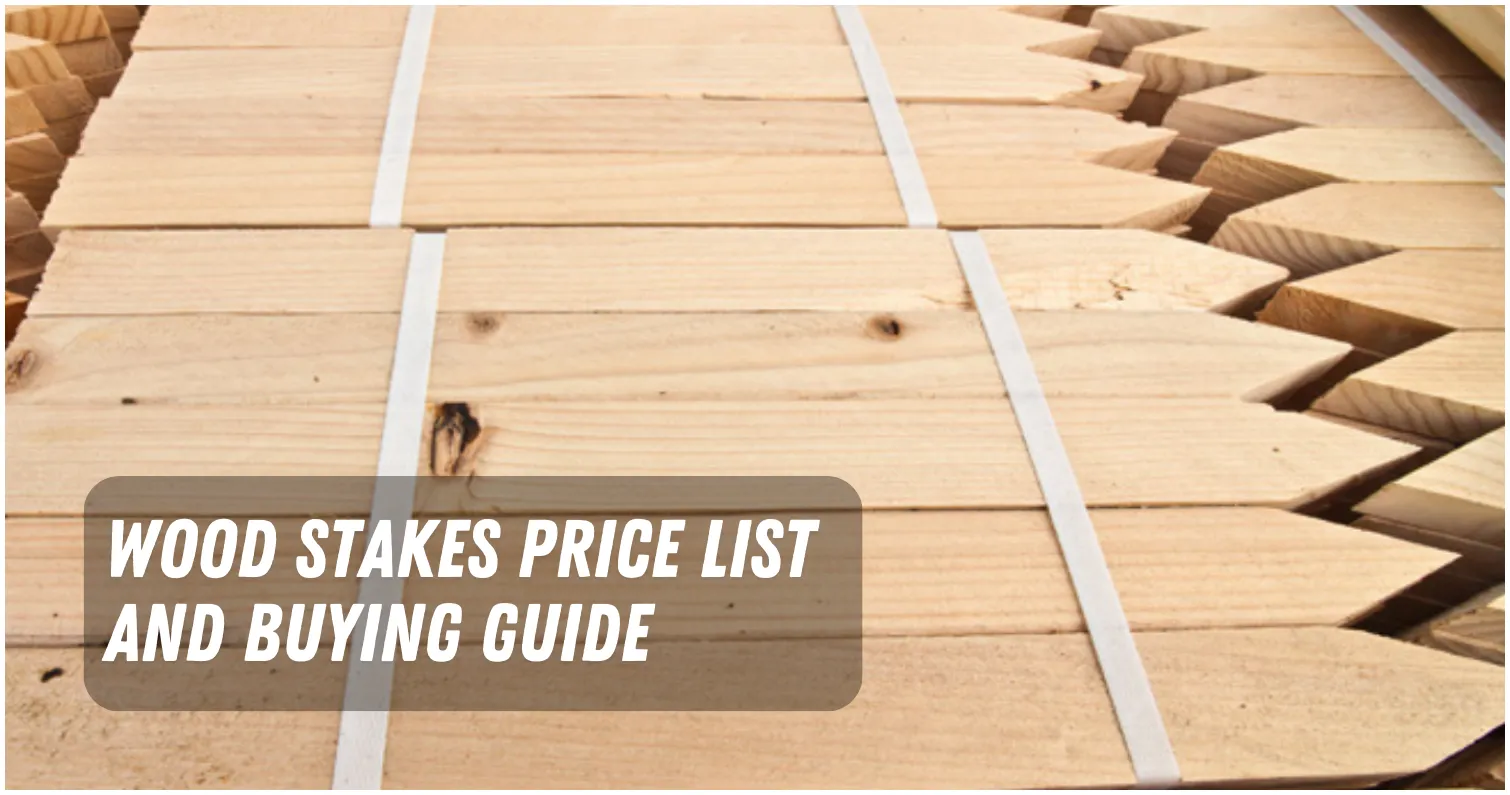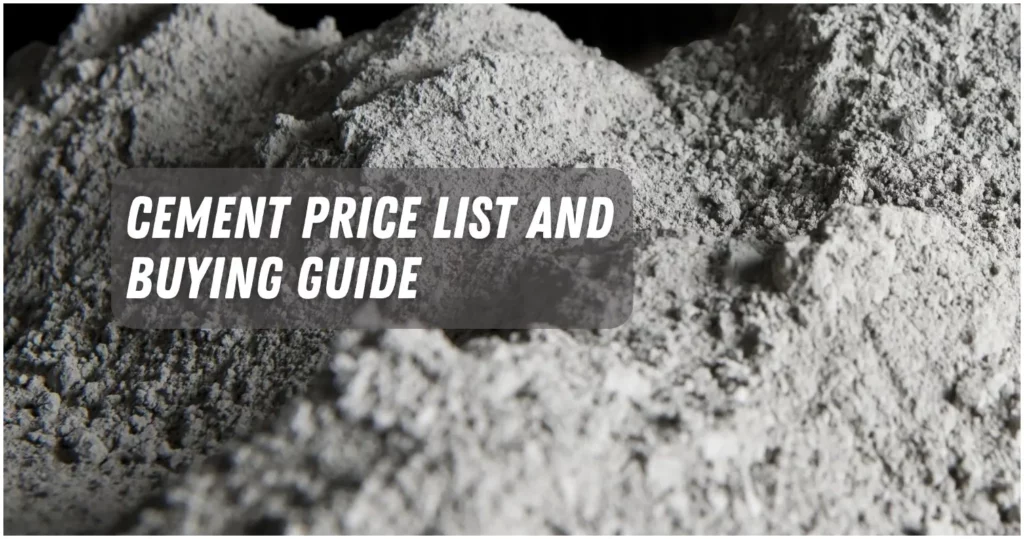If you want an easy way to support your plants, flowers, or signs at a reasonable price, you might want to think about using wood stakes.
Wood stakes are sticks or poles made of wood that can be driven into the ground to provide stability and structure for different reasons.
In this article, we will explain the price of wood stakes in Philippines that usually runs from 5 to 90 per piece.
There are also some things you should know about wood stakes, such as the type, pros and cons, and so on.
What is Wood Stakes

Wooden stakes are just pieces of wood cut to the right length and shape.
Most of the time, they have a pointy end that makes it easier to put them in the ground.
Different kinds of wood, like pine, cedar, bamboo, or hardwood, can be used to make wooden stakes.
The type of wood affects how long the stakes last, how strong they are, and how they look.
Wood Stakes Uses
Wood stakes have many uses in gardening, landscaping, construction, and other fields. Some of the most common uses are:
- Supporting plants:
Stakes help plants like tomatoes, peppers, beans, and sunflowers stand up straight by tying them together. - Marking boundaries:
Add signs or flags to wooden stakes to show property lines, garden beds, paths, and other designated areas. - Building fences:
You can make fences for privacy, security, or decoration by putting boards, wire mesh, or bamboo mats on the stakes. - Erecting tents:
For camping, events, or emergencies, use wood stakes to anchor tent ropes or poles to the ground and make sure the tent is stable. - Creating art:
You can make fun and educational art projects by painting, carving, or decorating wooden stakes and putting them in different patterns or shapes.
Wood Stakes Size

Wooden stakes come in different sizes, so you can choose one that fits your needs and tastes. These are the most common sizes:
- 12 inches: Ideal for small plants or marking small areas. Easy to handle and store.
- 18 inches: Suitable for medium-sized plants or marking medium-sized areas. Sturdier and more visible than 12-inch stakes.
- 24 inches: Suitable for large plants or marking large areas. More durable and noticeable than 18-inch stakes.
- 36 inches: Designed for very large plants or marking very large areas. Extra robust and prominent compared to 24-inch stakes.
Type of Wood Stakes

Different kinds of wood can be used to make different kinds of wooden stakes.
The type of wood affects the stakes’ quality, price, and look. These are some of the most common:
- Pine:
These are softwood stakes that are cheap and easy to find. They are light and easy to work with, but they have a tendency to rot and crack. - Cedar:
These softwood stakes are available and priced about the same as average. They don’t rot or attract bugs, but they are easy to warp and split. - Bamboo:
These are inexpensive grass stakes that are easy to find. They are strong and bendy, but they tend to break and splinter easily. - Hardwood:
These hardwood stakes are expensive and hard to find. They are sturdy and long-lasting, but they are usually heavy and hard to work with.
Wood Stakes Price List
The price of wood stakes depends on several factors such as the size, type, quantity, quality, and location of the seller.
The following table shows some average prices of wood stakes in Philippines:
| Size | Type | Price per piece (PHP) |
|---|---|---|
| 12″ | Pine | 10 |
| 18″ | Pine | 15 |
| 24″ | Pine | 20 |
| 36″ | Pine | 30 |
| 12″ | Cedar | 20 |
| 18″ | Cedar | 30 |
| 24″ | Cedar | 40 |
| 36″ | Cedar | 60 |
| 12″ | Bamboo | 5 |
| 18″ | Bamboo | 10 |
| 24″ | Bamboo | 15 |
| 36″ | Bamboo | 20 |
| 12″ | Hardwood | 30 |
| 18″ | Hardwood | 45 |
| 24″ | Hardwood | 60 |
| 36″ | Hardwood | 90 |
Wood Stakes Pros and Cons
Before you buy or use wood stakes, you should think about the good and bad things about them. Some pros and cons of wood stakes are as follows:
Pros:
- Cheap: Most of the time, wood stakes are less expensive than stakes made of metal, plastic, or concrete.
- Easy to use: Wooden stakes are easy to put in and take out. You only need a hammer or a mallet to drive them into the ground or pull them out.
- Natural: Wood stakes are natural and good for the environment. They don’t have any harmful chemicals or substances that could hurt the soil or the plants.
- Versatile: Wooden stakes can be used for many different things and in many different places. You can change them to make them fit your needs and tastes.
Cons:
- Weak: Wooden stakes are not very strong or durable. They can break, bend, rot, or crack due to the weather, insects, or physical stress.
- Inconsistent: Wooden stakes are not very consistent or uniform. They can vary in size, shape, color, and quality depending on the source and the processing.
- Unattractive: Wooden stakes are not very pretty or appealing. They can look dull, rough, or dirty over time.
Wood Stakes Alternatives

If wood stakes don’t work for you, try alternatives with similar functions but different features such as:
- Metal stakes: Strong and durable, made from steel, iron, or aluminum, withstand harsh conditions and heavy loads. But can be expensive, heavy, and challenging to work with.
- Plastic stakes: Lightweight and flexible, made from PVC, polyethylene, or polypropylene, resist rot and insects. But can be flimsy, brittle, and environmentally harmful.
- Fiberglass stakes: Hybrid of metal and plastic, combining strength and durability with lightness and flexibility, resist rust, rot, and insects. But more expensive than wood stakes and may splinter or shatter if mishandled.
- Concrete stakes: Solid and stable, made from cement, sand, or gravel, provide firm foundation and support. But can be costly, bulky, and challenging to install and remove.
Thing You Should Know about Wood Stakes
Here are some frequently asked questions and answers about wood stakes that you might find useful:
- What are wood stakes made of?
Wooden stakes are made from cut pieces of wood, and they usually have a pointy end that makes them easy to stick into the ground. - Why a wooden stake?
Using wooden stakes to support plants, flowers, or signs is an easy and inexpensive way to give them stability and shape. - How do you put wooden stakes in the ground?
Follow these steps:- Pick an appropriate place.
- Mark where the stake will go.
- Put the stake firmly into the ground with a hammer or mallet.
- Change the position and angle as needed.
- How do you sharpen wooden stakes?
You can sharpen wooden stakes by using a knife, a saw, or a file. Hold the stake firmly and cut or scrape a point off one end carefully to make a point. If you need to, repeat on the other end. - What is the angle for wooden stakes?
The angle of wooden stakes depends on what you want to do and how you want them to look. For stability and support, most angles from the ground are between 45° and 90°.
We hope this article has helped you learn more about wood stakes price in Philippines and other related information.
If you have any questions or comments about wood stakes price in Philippines, please comment down below.
[ratings]

